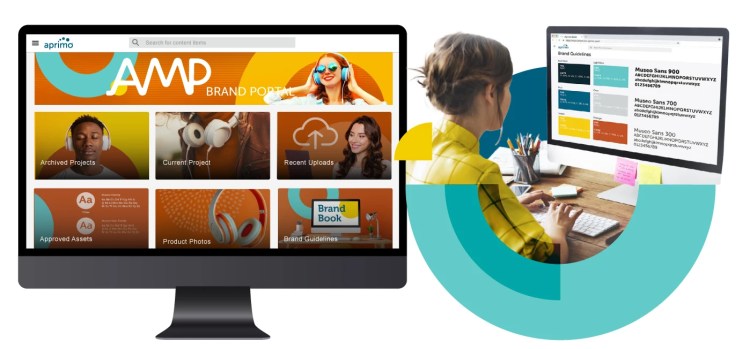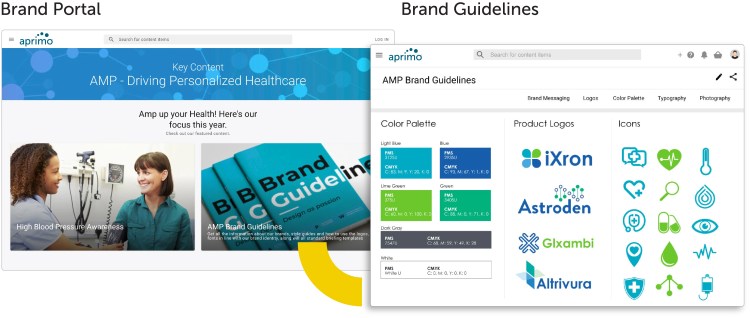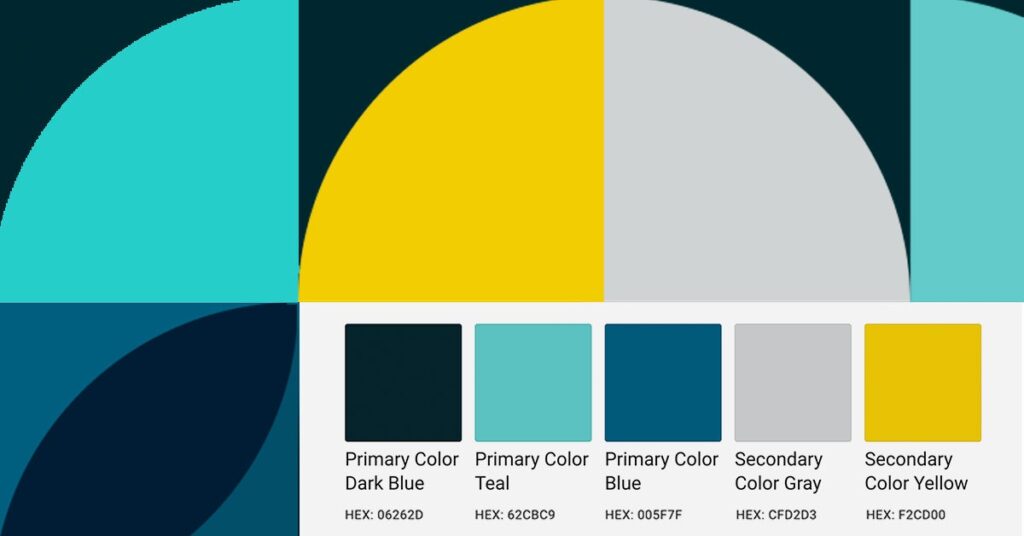Launching a brand with a large or remote creative team can be a bit of a roller coaster. The team dives in full of ideas and excitement for delivering assets. But soon, things get muddled. The creative direction isn’t clear, iteration becomes frustrating, and timelines start dragging. Building concepts, exchanging ideas, and deciding on your core brand components should be exciting, not disheartening. It can be, however, with the help of strong, well-constructed brand guidelines.
Creating comprehensive brand guidelines up front helps everyone deliver a quality branding initiative. Plus, you can do it quickly without backtracking to fix consistency issues. Brand consistency pays significant dividends, potentially increasing revenue by 10-20%.
To help you start strong, this article will cover the fundamentals of brand guidelines:
- The definition and purpose of brand guidelines
- The benefits of creating a style guide for your brand
- The steps to creating a new brand from scratch
- How technology helps teams follow their branding strategy
What are Brand Guidelines?
Brand guidelines determine how your brand communicates with its customers. They lay out all the essential elements to deliver your message with continuity and consistency. Brand guidelines ensure that creatives understand the look and feel of the brand.
Brand guidelines dictate the visual brand aesthetic. Here are some common elements of a brand aesthetic:
- Color palette
- Fonts (with size guidelines)
- Logos and logo usage
- Brand templates (letterhead, business cards)
- Iconography
- Visual style
- Video presentation
- Design conventions
Brand guidelines also lay out how to communicate the brand narrative. Here are some examples of brand narrative:
- Brand tone of voice
- Identity and attitude
- Origins and brand story
- Company mission statement
- Brand values
- Corporate vision
Purpose of Brand Guidelines
Brand guidelines?also called a brand style guide, brand book, or brand manual?make up the playbook used to deliver a unique brand message. This key document outlines the visual and non-visual elements of the brand experience.
A brand guide is a source of truth, laying out the ‘rules? for brand communicators to follow in creating assets. The following team members will benefit most from using this guidebook:
- Brand managers
- Copywriters
- Graphic design artists
- Marketers
- Social media managers
- Retailers
Brand identity guidelines ensure creative stakeholders are on the same page to deliver carefully curated messaging, visuals, and experiences.
Benefits of Brand Guidelines
A thorough collection of brand guidelines promotes a strong brand and consistent campaigns. It keeps your team moving in the same direction, shortens the time to market, and improves your core brand elements.
Once guidelines are in place, there are tools to help teams stay compliant and confidently create on-brand experiences. For instance, a digital asset management (DAM) tool with solid brand management features enhances these benefits, which is why when you’re evaluating DAM vendors, it’s important to look for how robust they are.
Here are five key benefits to keep an eye out for to see how DAM software stacks up:
Increases brand consistency: When every creative stakeholder has access to the most up-to-date brand guidelines, the first benefit is better brand cohesion. Likewise, access to compliant materials through a DAM makes it easier to deliver compliant results.
Speeds the creative process: Brand guidelines let everyone know what to expect when creating assets. Alignment makes it easier to deliver compliant assets on time. With more compliant assets delivered faster, products enter the market ahead of competitors. Building these elements within a modern DAM platform further speeds the process with automated approvals, dynamic search, and digital rights management (DRM) features to ensure compliant asset use.
Increases market recognition: Visual cues are powerful motivators for customer behavior. Consistent branding helps customers recognize and select your brand more easily in a crowded market. Effective and consistent use of color, logos, typography, and on-brand imagery make brand association stronger and more effective.
Conveys brand personality: Strong branding guidelines give brand storytellers the structure they need to craft the ideal brand identity. With intention, storytellers convey the right tone and personality to engage the target audience.
Drives engagement: A brand with strong recognition and personality are more likely to encourage engagement from users on social media and other digital platforms. This engagement improves brand reach, new customer acquisition, and continued customer loyalty.

How to Create Brand Guidelines
Bringing together a brand identity requires creativity and a deep understanding of your core brand elements:
- Mission
- Vision
- Values
- Personality
- Target audience
Why start with these essentials? Because they’re the most humanizing elements of your brand. Communicating the company’s mission or ?why,? sharing its vision for the future, and sharing the values used to conduct business will drive connection with audiences. And that connection is more important than ever, with 77% of consumers electing to buy from brands that share their values.
Sharing those elements with a brand personality that matches your target audience heightens the brand connection. By designing from these building blocks, you increase opportunities to connect with your ideal customers.
Once the ethos of the brand is in place, creative teams begin the branding process.
1. Develop branding ideas
Compile a portfolio or mood board to gain inspiration for the visual aspects of the brand. Use clips of photos, videos, fonts, icon sets, and other visuals to beat blank page syndrome and discover what you like (and don’t) for your overall brand aesthetic.
Then, use your core brand elements to inform your selection process. What does your intended audience want? What imagery and experiences excite them?
Finally, use your understanding of the buyer persona to build visual references. You may also take inspiration from brands you admire or brands with a similar product or branding style.
Collect these preliminary assets into a collaborative workspace to help stakeholders work on concepts, share ideas, and decide on a direction.
2. Decide on style guide elements
While each brand is different, every successful brand has six distinct elements to its branding:
- Story: What message does your brand have to share? Is it a garage-born tech firm that grew into a household name? A beverage company with a unique flavor and bold, quirky marketing? A car company focused on making commuting fun again? The brand story connects customers with your mission, vision, and values through a brand narrative.
- Voice: Brand voice conveys your brand’s personality and connects customers to the brand experience. Brand voice and tone elements like tagline, web copy, social interactions, and online content deliver messaging consistent with qualities conveyed in other brand elements. Is your product line for the young and hip? Or is it designed to appeal to a mature buyer looking for reliability? Does your brand communicate through humor, or is it more the quiet and dependable type? Whatever your brand personality, it comes out through voice and tone.
- Logos: Brand recognition starts with a solid visual identity. The most recognizable visual of your brand is the logo. The logo design should reflect the other branding components, evoking the sentiments and attitudes on which the brand is based. Your brand kit should include versions of your logo for different uses and situations:
- Vertical and horizontal presentations
- Color and black & white versions
- Social media avatars
- Holiday and event logo versions
All logo presentations should adhere to the structure and rulebook of the main logo.
- Brand colors: The palette for your brand evokes the same emotional response as other elements. It should reflect the attitudes of your target audience and the general aesthetic of the product, for example bright, primary colors for a kid’s product, or conservative, understated hues for a luxury item. These color codes should be used consistently throughout your brand assets: website, social media, print collateral, packaging, sleeving, etc. Be sure to include both RGB and CMYK in online brand rules to keep marketing consistent.
- Typography: Typefaces (like logos) should reflect your brand story and market position. Typography can speak volumes about the product on offer, whether it be refined, irreverent, sincere, reliable, or carefree. Type and font play an essential role in subtly conveying your brand attitude.
- Images: The imagery used in brand communication speaks directly to the target audience. For instance, an outdoor lifestyle company featuring people in a rugged, natural setting, or a gaming console featuring images of family fun at home. Imagery that conforms to brand-specific sentiments conveys the brand promise and aligns with the customer’s self-concept, which is most effective in reinforcing brand awareness and loyalty.
3. Define brand guide parameters
Your brand guide determines the course of your marketing and messaging assets. Determine what elements of messaging your brand guide should cover. Here are a few categories of assets to consider:
- Web media (websites, apps, social media, digital ads)
- Print (collateral, packaging, signage, letterhead, business cards)
- Traditional advertising (radio, television, newspaper)
Defining these parameters will get all creative stakeholders on the same page concerning messaging and continuity across channels. This ensures that all required channels get consistent attention and oversight.
4. Decide how to deliver your guide
In the past, brand guides were a static resource. Guidelines were laid out in a physical guide or a PDF.
In modern digital marketing, delivering your guidelines to your team with an interactive branding solution like a DAM improves compliance and reduces risk. Using a digital solution also updates stakeholders automatically as brand guidelines and needs change.
5. Implement and refine
A brand guide is a living document. Once your new brand launches in the marketplace, analyze your engagement metrics. Understand how your target audience receives and responds to branding, and use those metrics as a basis for refining messaging, tone, imagery, and content.
Use your available digital assets to grow the brand into new channels, repurpose content for faster delivery, maintain consistency, and inform future rebranding efforts.

How Software Improves Compliance with Brand Guidelines
While PDF guides were once the standard, the demand for creating an immersive, omnichannel customer experience calls for better technology. Fortunately, DAM technology like Aprimo offers marketers a place to collaborate and create compelling, compliant assets.
Aprimo offers robust brand management and DRM features to align teams and ensure assets are used appropriately. With the power of a digital platform, delivering campaigns is faster and easier.
Here are some of the most helpful functions DAM provides to simplify the creation and management of brand guidelines:
- Centralizes brand guidelines into a platform that enforces compliant use
- Helps users search for compliant assets to use and repurpose
- Creates approval workflows for assets in production
- Enables templates for non-creative users to create brand-compliant experiences
If your organization could benefit from the improved compliance and speed of a digital asset management platform with robust brand guideline capabilities, start your free trial of Aprimo DAM.


